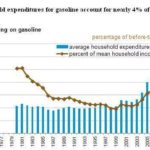Americans have a very different experience in the credit markets than international borrowers and investors. During the 2008 financial crisis –a US “export†to the rest of the world – credit simply disappeared. As Americans tend to borrow long and at fixed-rates, the crisis was far less detrimental to Americans than international investors and borrowers.
This is what a credit crunch looks like for the rest of the world:

As the US Dollar is a major reserve currency, investors flock to it in times of fear. This movement is absolutely devastating for borrowers in other countries who repay foreign investors with local currencies. It’s even more devastating when foreign investors were the sole source of consumer and business credit.
Emerging Market Yields without Currency Risk
Emerging markets are price takers, not price makers. Naturally, they have to accept that global investors in particular want to avoid exchange-rate risk. Thus, many emerging market governments and businesses issue debt securities denominated in US dollars to attract international interest.
Here are a two bond funds that invest in international, dollar-denominated debt:
- JP Morgan Emerging Markets Bond Fund (EMB) – A product of iShares, this ETF tracks a major global index of US-dollar denominated debt securities. The fund holds investments in the hottest of emerging markets including the Philippines, Russia, Peru, Brazil, Mexico and others. With a weighted average maturity date of just over 12 years, and a 12-month yield of 4.75%, it’s safe to say that this may be one of the best bond funds for high-yield investors. The fund passes on a .60% annual expense.
- Emerging Markets Sovereign Debt Portfolio (PCY) – Invesco PowerShares is behind this broad-based fund, which holds positions in debt securities issued by 22 emerging market nations. Selections are made annually, and rebalanced quarterly to limit fund expenses, which are a modest .50% annually. This fund provides a larger yield than EMB with a 5.27% 12-month yield. However, investors do accept more rate-risk; the fund has a weighted average maturity date of 14.86 years, nearly 3 years longer than the EMB ETF.
Why Buy Emerging Market Funds?
Emerging markets offer a few lucrative attributes to investors:
- Higher yields – You should expect that greater emerging market risk provides larger rewards in the form of yields. Few superpowers (with the exception of select European nations) have bond yields that come close to the yields in international sovereign debt. The 20-year US Treasury, for example, yields only 2.4% while the 10-year provides only 1.71% annually and some corporate bond yields are even lower!
- Short-term improvement – In the bond markets, debt upgrades are everything. A majority (92% for ECB, and 87% PCY) of these funds are invested in bonds with a rating lower than A. This allows for immediate upside should the bonds earn an improved credit rating from the three major credit rating agencies. As with any upgrade, yields go down and bond values go up, creating immediate capital appreciation. As both funds are rebalanced to the index, profits can be reinvested in other bonds on the verge of credit improvement for a very powerful compounding effect.
- Smart indexing – Realistically, emerging market debt denominated in dollars is a financial novelty – a way for emerging markets to price the real risk of foreign direct investment. When institutional investors and businesses have a proxy for gauging risk (the spread between US Treasuries and emerging market debt denominated in dollars is the effective price for emerging market risk) nations can solicit more foreign direct investment in the form of factories, call centers, or whatever capital investment necessary to offshore operations. It is only logical that emerging markets which open themselves to foreign investment will see the best fiscal outcomes. Foreign direct investment is a major growth driver in emerging markets like Brazil, India, and China.
- Liquidity – The US dollar is the most liquid currency in the world. Naturally, emerging market debt priced in dollars is more liquid in the event of a second credit crunch. This liquidity keeps volatility in foreign debt issues lower than that of debt issues denominated in local currencies.
Final Word on High-Yield Emerging Market ETFs
Emerging market investments are absolutely not without their risks. However, as risk-free yields are driven to lows by institutional investors, retail investors have an opportunity to up returns with a step up the risk-curve. A future bond upgrade for one or many emerging markets could provide incredible returns in either intermediate bond fund. The opposite is also true, however, a downgrade could substantially affect short-term fund performance.
Investors usually snub emerging market debt securities due to exchange-rate risk, as well as inflation risk. As these bonds are priced in dollars, however, exchange-rate risk is effectively removed. Inflation risk is limited to that in the US dollar, not foreign currencies and smaller central banks. As two major, mostly-unpredictable risks are removed, these funds are demonstrably more predictable than a fund invested in debt denominated in a local currency.
Disclosure: the author holds no positions in any of the above ETFs.











{ 0 comments… add one now }